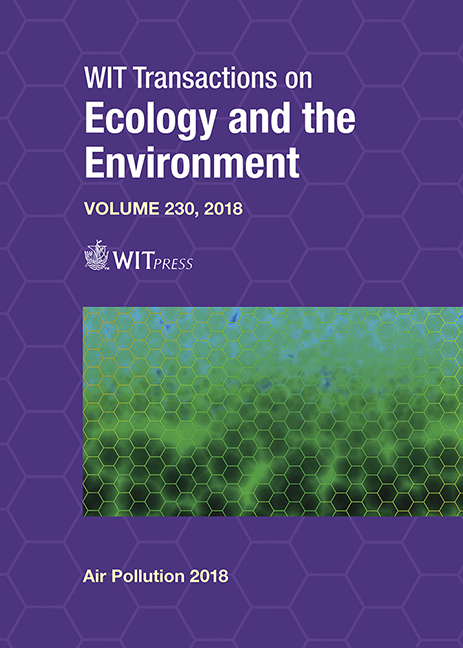IMPROVING AIR QUALITY AND HUMAN HEALTH: AN APPROACH BASED ON ARTIFICIAL NEURAL NETWORKS
Price
Free (open access)
Transaction
Volume
230
Pages
8
Page Range
205 - 212
Published
2018
Paper DOI
10.2495/AIR180191
Copyright
WIT Press
Author(s)
HELDER RELVAS, JOANA FERREIRA, DIOGO LOPES, SANDRA RAFAEL, SUSANA MARTA ALMEIDA, ANA ISABEL MIRANDA
Abstract
In 2015 up to 30% of Europeans were living in cities with air pollutant levels exceeding European Union (EU) air quality standards, and around 95% were exposed to high concentrations, namely particulate matter (PM), deemed damaging to health accordingly to the World Health Organization (WHO) Air Quality Guidelines. In order to reduce air pollution effects, particularly in cities where the majority of the population lives, it is important to define effective planning strategies for air quality improvement. For this purpose, the ongoing project LIFE Index-Air aims to develop an innovative and versatile decision support tool for policy makers, based on an integrated modelling approach, from emissions to health effects, which will help to identify measures to improve air quality, reducing PM levels, and quantitatively assess their impact on the health and well-being of the populations. Five European urban areas will be considered, Lisbon (Portugal), Porto (Portugal), Athens (Greece), Kuopio (Finland) and Treviso (Italy) at high spatial and temporal resolution, covering PM10, PM2.5 and metal elements regulated by EU legislation. For now, the WRF-CAMx air quality modelling system was applied to the Portuguese domains with a spatial resolution of 0.01° (~ 1 km) for 2015. The EMEP emission inventory for 2015 with a spatial resolution of 0.1° and including metal species was considered. For the finest resolution domains (urban) the EMEP emissions were disaggregated to 1x1 km2, based on spatial proxies and emission sources locations. This paper shows the preliminary air quality modelling results, and presents the methodology, based on Artificial Neural Networks (ANN), which will allow to quickly test different measures to improve air quality and to reduce air pollution effects.
Keywords
PM10, health, WRF-CAMx, air quality modelling, Artificial Neural Networks





